20, 100, 3, 19 - InoThings in numbers
There are a dozen rows of chairs in the InfoSpace room. Gradually, people appear, occupy less free places. Someone is sipping, someone is sifting through handouts, someone is opening a laptop, the operators of the Federal News Agency are preparing cameras and lights to release a report on the conference InoThings Conf 2019 already at night. Everything changes when Oleg Artamonov opens the conference for professionals of the Internet of things market: he tells what awaits us, who will speak and why it is important to be today at InoThings Conf 2019. Everyone understands that the event of the year is ahead.
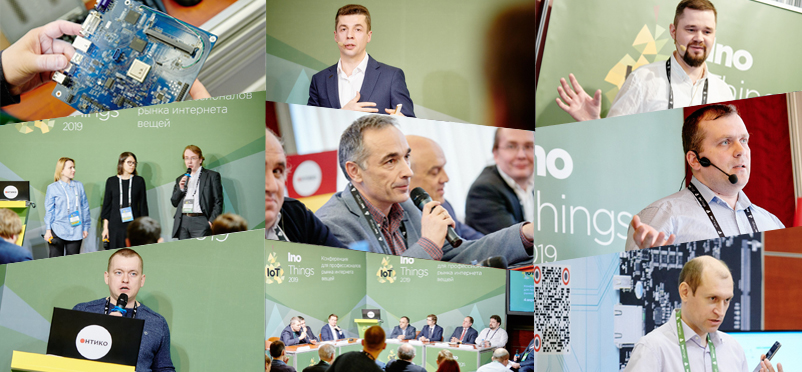
On April 4, a conference was held in Infospace for those who understand IoT best of all and earn money on it. 19 reports, 20 speakers, 100 questions and 3 round tables. Briefly tell what she remembered.
Reports are the first conditional half of the event, at which some specialists tell about their mistakes or successful cases to the community, so that it does not repeat the wrong experience, but repeat the right one. At 19 reports, participants asked 100 questions to the speakers. And so briefly what we remember.
')
Alexey Spirkov said that at first they had created a product for solving their problems in STC Astrosoft LLC, and then it turned out to be useful to other companies.
Oleg Plotnikov shared stories of how modern IoT interacted with utilities: electricity meters, heating pipes, lighting poles, 66 months payback, 100% coverage of Chelyabinsk and a “father's blessing” to everyone who decides to go to work in this area.
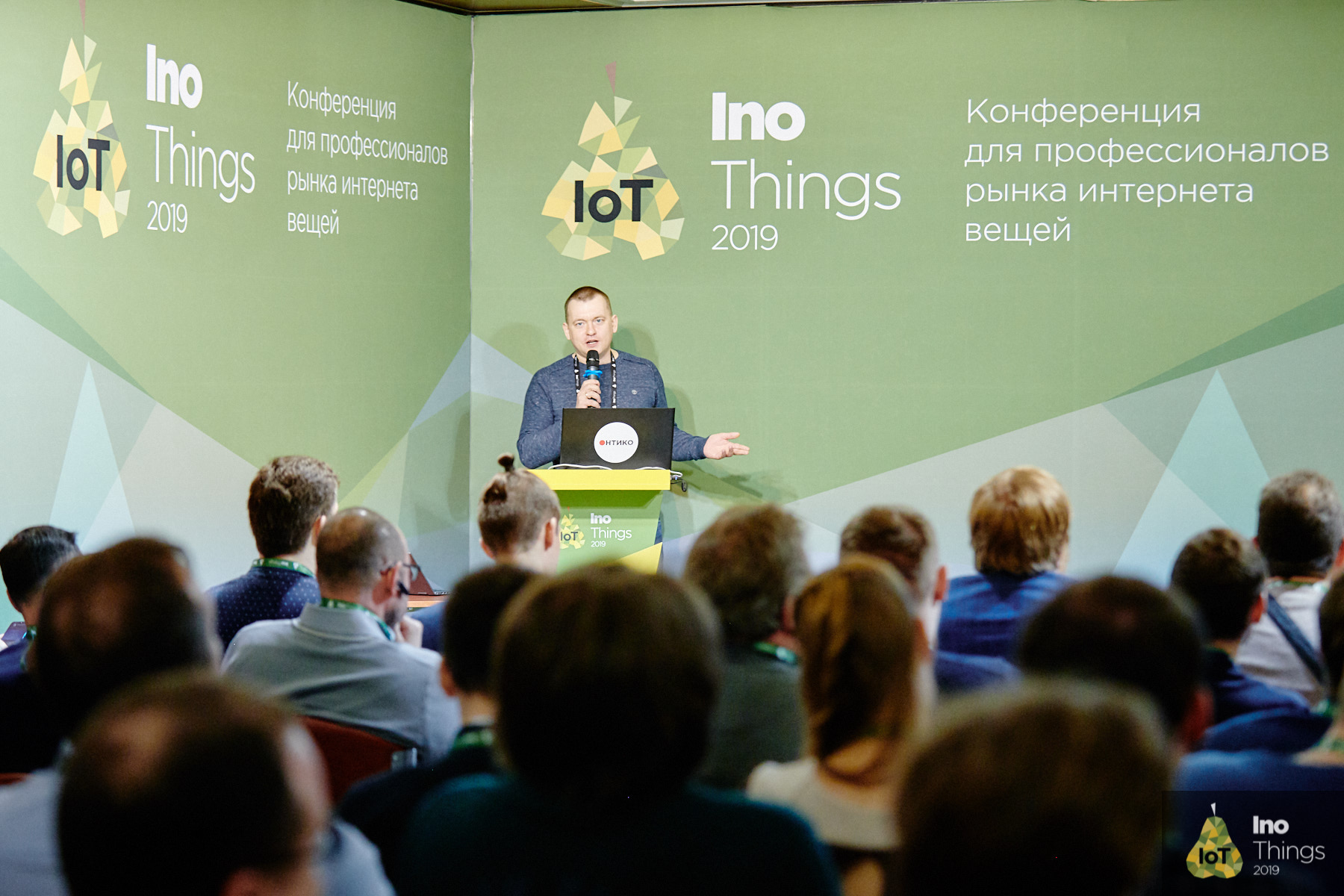
Yaroslav Alexandrov explained that vulnerabilities, errors, remote code execution should be sought in the software for IoT, just like in any other. Static analysis helps to completely cover the code and find vulnerabilities. How to implement it, what stages, processes and what result to expect from a static analysis told in detail Yaroslav.
Roman Zaitsev shared real cases: how a logistics company came to Geyser Telecom with the tasks of controlling overload, driver and tire pressure, how to control grain levels in storage, how to “get” a customer to use the project of increasing productivity and automation in production he himself ordered. Each case is usually paid for by the time and money of the company.
The report by Vyacheslav Shirikov is deeply technical, but caused a lively response - half of the time was devoted to the questions: how are SPODES data converted to another counter protocol, how not to lose DLMS packets, how time accuracy is achieved, how long is the session?
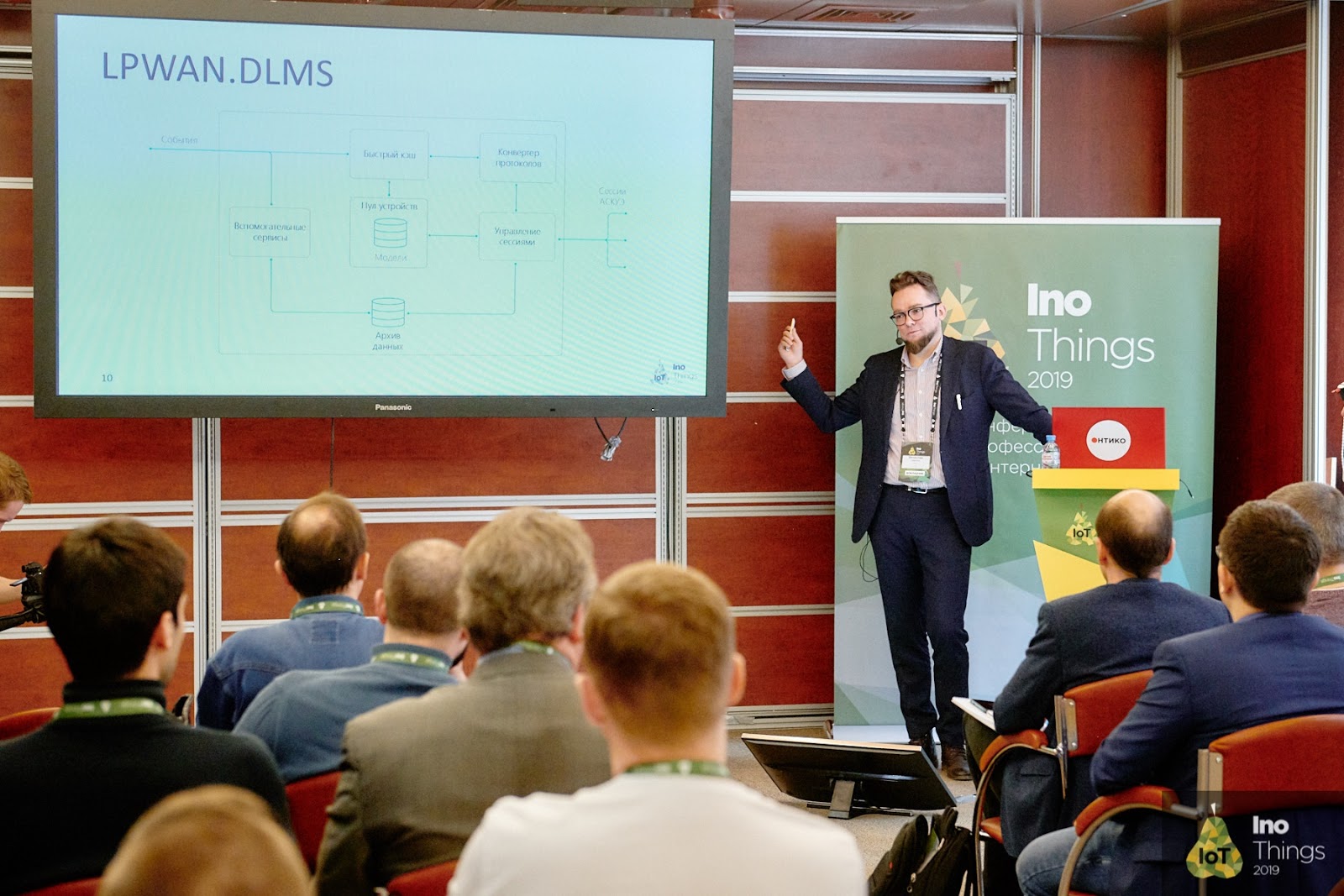
The main event of the entire conference is a public discussion of the pain points of the industry. There are three points in total: national standards, business processes in IoT and microelectronics in Russia .
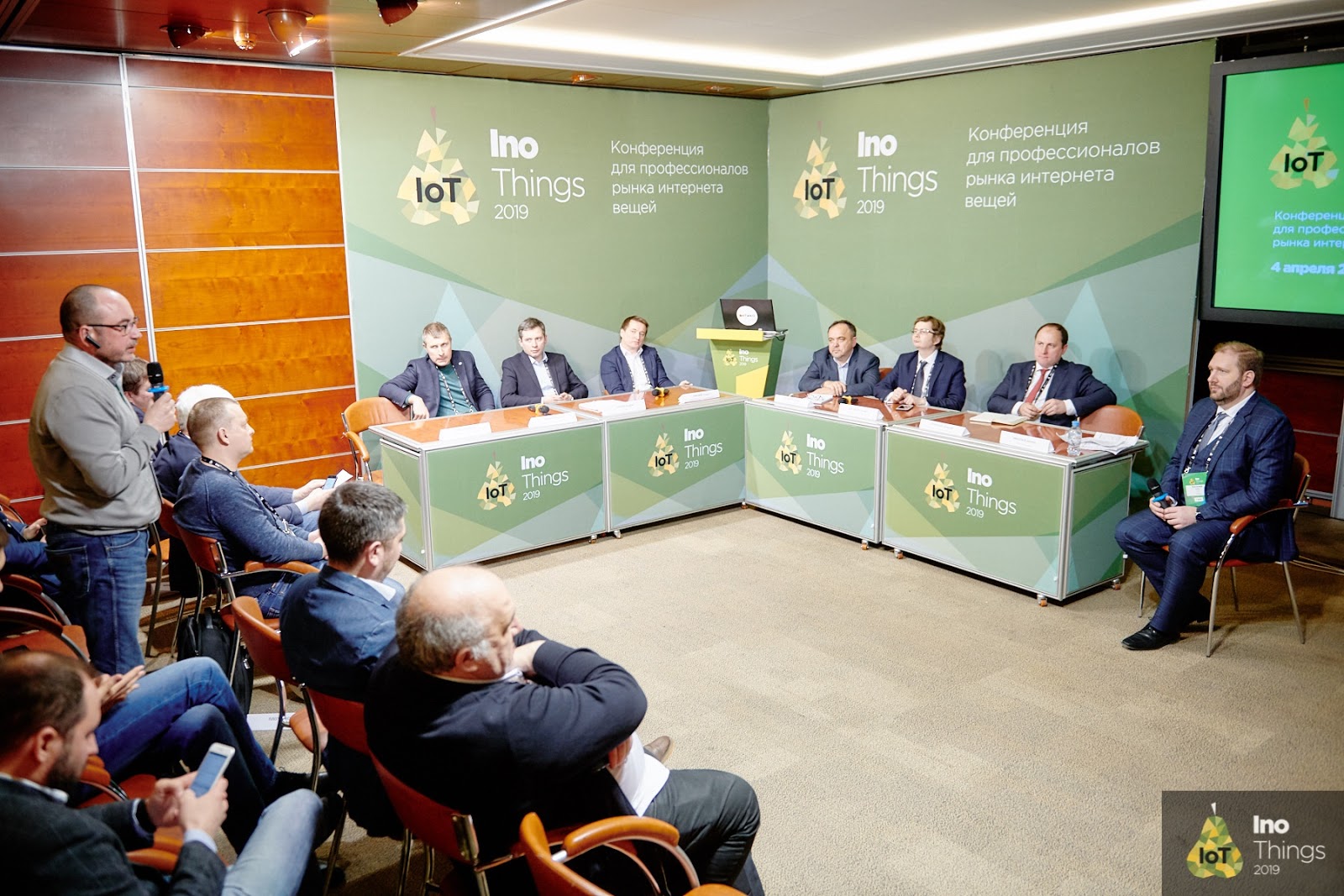
The first round table went more than one and a half hours. Oleg Artamonov spoke in detail about the list of participants, the topic and the importance of the table. We will not repeat, but the scale that Oleg promised has been fulfilled. A few quotes for the overall picture.
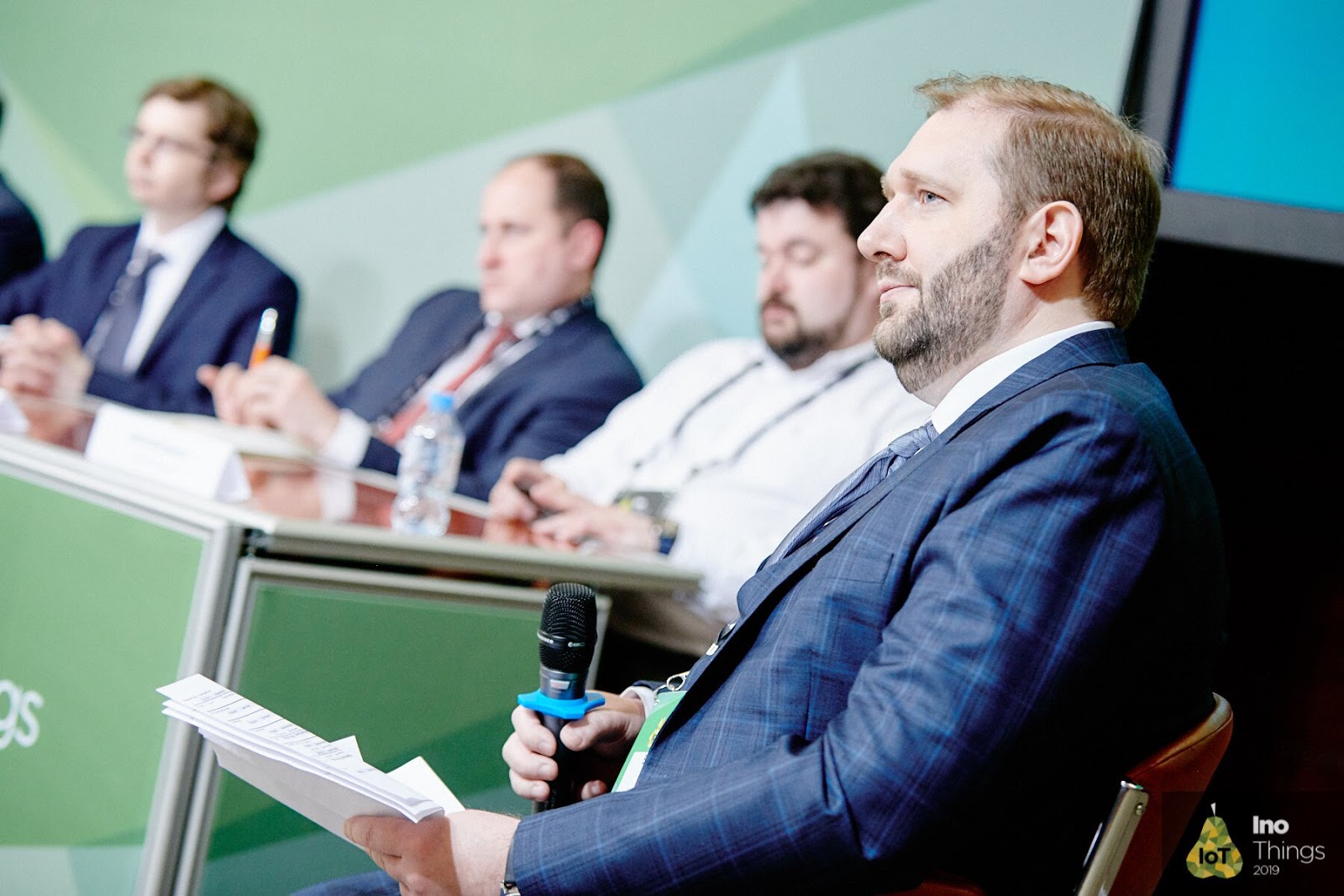
The second table “Paradigm shift - why does the classic telecom approach to projects not work in IoT?” Was led by Oleg Artamonov. Geyser Telecom, Concern Goodwin, Sibintek, MTS, Actility have discussed the sales model of IoT devices, business process improvements and, of course, standards. And also why it is impossible to set an engineering manager, why small projects on the Internet of things are impossible, why iron is not a goal, but a means.
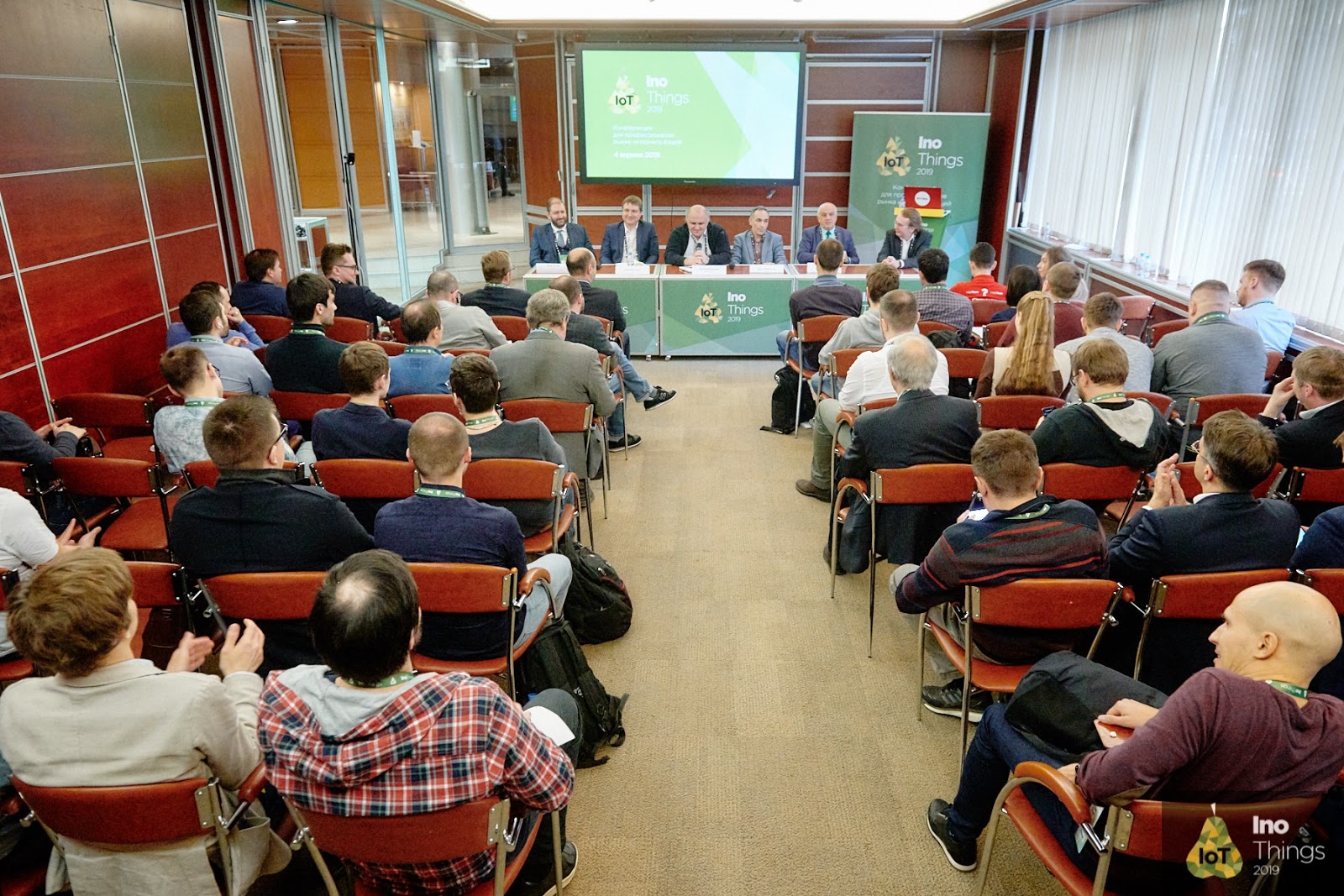
The third round table is “Ways and prospects of microelectronics in Russia: a meeting with developers of domestic processors” . Representatives of Sierra Wireless , NewTech and Baikal Electronics , which had a stand with Baikal-T1 processors, were present at the conference. The processors are installed on Tavolga Terminal, Linux is running and the Internet is connected - a live system with which you can play, touch and ask questions. What everyone did to not miss the opportunity to get acquainted with the system, which everyone knows about, but few have met.
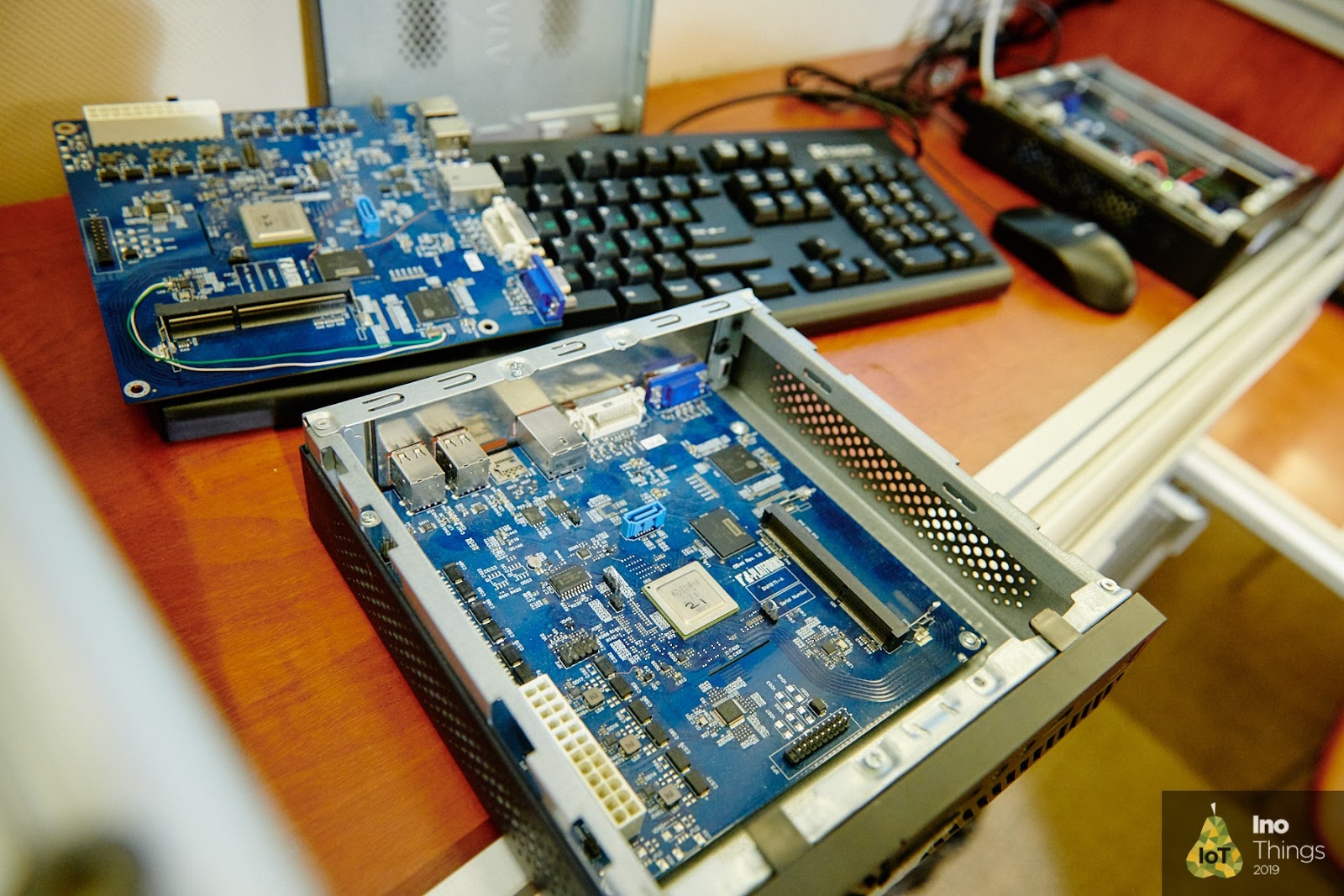
Most of the questions that were asked at the Baikal Electronics booth migrated to the round table: why do it all, what are the prospects, why is the Russian market small. How to scale processors, what is generally understood by domestic development of processors, can we consider processors domestic, if some units are bought abroad, some are developed at home, and are made in Taiwan? A separate line of questions about China: when it comes, what to fear and what to do?
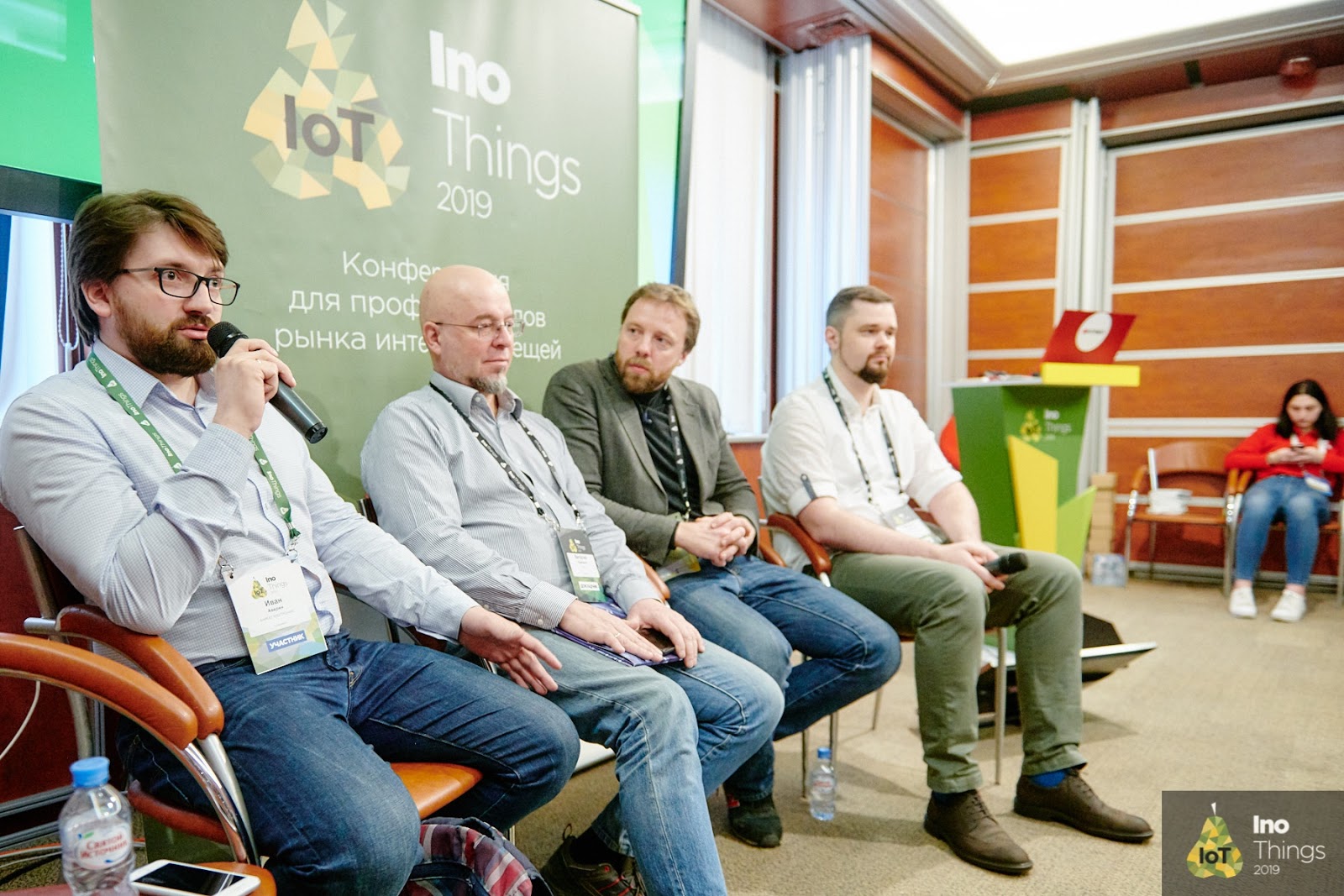
We hope that at the next conferences other domestic manufacturers, following the example of “Baikal Electronics”, will bring their designs that will be interesting to see, touch and apply.
The conference was quick: all the slides were scrolled, all questions were asked, all the coffee was drunk. If the reports and round tables would not be limited in time - InoThings Conf 2019 would stretch until morning. Now we have a whole year: participants process and implement the information, speakers - to gather material for new speeches, to the organizers - to prepare InoThings Conf 2020.

On April 4, a conference was held in Infospace for those who understand IoT best of all and earn money on it. 19 reports, 20 speakers, 100 questions and 3 round tables. Briefly tell what she remembered.
19 reports, 100 questions
Reports are the first conditional half of the event, at which some specialists tell about their mistakes or successful cases to the community, so that it does not repeat the wrong experience, but repeat the right one. At 19 reports, participants asked 100 questions to the speakers. And so briefly what we remember.
')
Alexey Spirkov said that at first they had created a product for solving their problems in STC Astrosoft LLC, and then it turned out to be useful to other companies.
Oleg Plotnikov shared stories of how modern IoT interacted with utilities: electricity meters, heating pipes, lighting poles, 66 months payback, 100% coverage of Chelyabinsk and a “father's blessing” to everyone who decides to go to work in this area.

Yaroslav Alexandrov explained that vulnerabilities, errors, remote code execution should be sought in the software for IoT, just like in any other. Static analysis helps to completely cover the code and find vulnerabilities. How to implement it, what stages, processes and what result to expect from a static analysis told in detail Yaroslav.
Roman Zaitsev shared real cases: how a logistics company came to Geyser Telecom with the tasks of controlling overload, driver and tire pressure, how to control grain levels in storage, how to “get” a customer to use the project of increasing productivity and automation in production he himself ordered. Each case is usually paid for by the time and money of the company.
The report by Vyacheslav Shirikov is deeply technical, but caused a lively response - half of the time was devoted to the questions: how are SPODES data converted to another counter protocol, how not to lose DLMS packets, how time accuracy is achieved, how long is the session?

20 speakers for 3 tables
The main event of the entire conference is a public discussion of the pain points of the industry. There are three points in total: national standards, business processes in IoT and microelectronics in Russia .

The first round table went more than one and a half hours. Oleg Artamonov spoke in detail about the list of participants, the topic and the importance of the table. We will not repeat, but the scale that Oleg promised has been fulfilled. A few quotes for the overall picture.
- For the average official, “Internet of Things” is a stool with access to prohibited resources. There is Internet - it means SORM.
- Previously, our auto industry was crushed by right-hand drive cars and other foreign cars. Then the state created the conditions under which the market share of domestic cars grew, and foreign cars began to gather with us. Maybe this way to go, than to take a weak, raw standard, and then finish it for three years?
- National standard is inevitable. Therefore, it is necessary to think not to insulate us and not chop off technological innovations on the way.
- There is no such international standard that can be taken and used. This is not Wi-Fi 802.11, which can be taken, read the documentation and apply. Therefore, the standard is not taken from abroad. Yes, it is raw, full of holes, but offer better.
- We live, work and do business in Russia. We have scanty sales on the international market; therefore, we cannot say that we should adopt international standards. We are not even technologically ready for this.
- We did not write the standard from scratch and proposed to make it a national standard. We have released 350,000 devices that work and then offered a standard.
- If you have any suggestions, you will not discuss it in social networks, but send it to a technical committee. All the experts gathered in Telegram, they discussed everything and did not come to anything.

The second table “Paradigm shift - why does the classic telecom approach to projects not work in IoT?” Was led by Oleg Artamonov. Geyser Telecom, Concern Goodwin, Sibintek, MTS, Actility have discussed the sales model of IoT devices, business process improvements and, of course, standards. And also why it is impossible to set an engineering manager, why small projects on the Internet of things are impossible, why iron is not a goal, but a means.

The third round table is “Ways and prospects of microelectronics in Russia: a meeting with developers of domestic processors” . Representatives of Sierra Wireless , NewTech and Baikal Electronics , which had a stand with Baikal-T1 processors, were present at the conference. The processors are installed on Tavolga Terminal, Linux is running and the Internet is connected - a live system with which you can play, touch and ask questions. What everyone did to not miss the opportunity to get acquainted with the system, which everyone knows about, but few have met.

Most of the questions that were asked at the Baikal Electronics booth migrated to the round table: why do it all, what are the prospects, why is the Russian market small. How to scale processors, what is generally understood by domestic development of processors, can we consider processors domestic, if some units are bought abroad, some are developed at home, and are made in Taiwan? A separate line of questions about China: when it comes, what to fear and what to do?

We hope that at the next conferences other domestic manufacturers, following the example of “Baikal Electronics”, will bring their designs that will be interesting to see, touch and apply.
The conference was quick: all the slides were scrolled, all questions were asked, all the coffee was drunk. If the reports and round tables would not be limited in time - InoThings Conf 2019 would stretch until morning. Now we have a whole year: participants process and implement the information, speakers - to gather material for new speeches, to the organizers - to prepare InoThings Conf 2020.
Soon in the blog we will begin to publish transcripts of reports, on the youtube channel to open video recordings from the conference. Subscribe to the newsletter to receive fresh materials. In addition to reports, we will send you news, announcements of a new conference and materials on IoT, which appear at our other conferences.
Source: https://habr.com/ru/post/448208/
All Articles